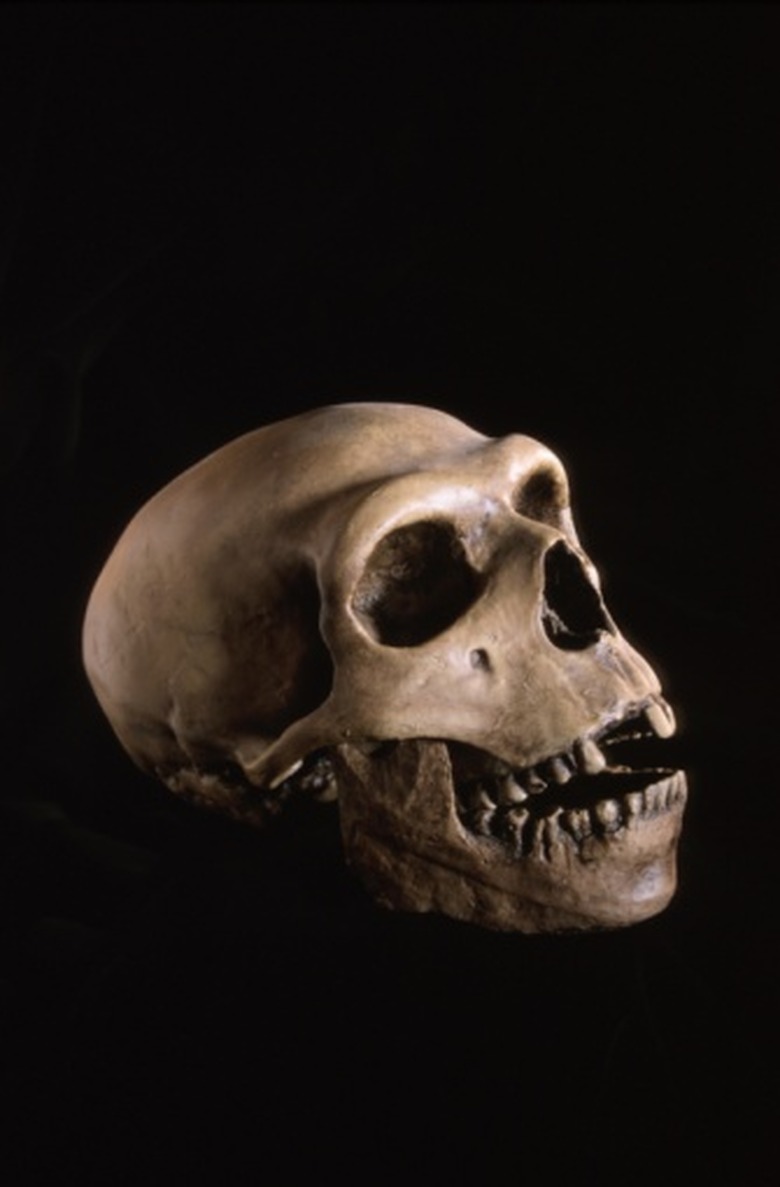Seven Stages Of Early Man
Modern humans are a young species in geological terms. The earliest fossils that meet the criteria for archaic Homo sapiens, the genus and species name for humans today, date to about 400,000 years ago, while modern humans have been around for perhaps 170,000 years or so.
Apes as a whole (and taxonomically, humans are apes) evolved some 20 million years ago from earlier primates, which were primarily arboreal, or tree-dwelling.
Human Evolution Timeline
Human Evolution Timeline
Human evolution has been through several stages, but seven different stages of mankind stand out. Note that paleontology is a science rife with emerging discoveries and that specifics about the timeline may change in the future, although the general scheme is well understood and accepted.
Hominidae
Hominidae
The apes that would ultimately evolve into the humans of today split from the so-called lesser apes about 7 million years ago. These are the Hominidae, or great apes. This is the approximate time frame given for the divergence of the human lineage from that of chimpanzees, humans' closest surviving relatives.
This divergence is believed to have taken place in Africa, with many early hominid fossils gathered in Kenya. Several different candidates exist in terms of which organism ultimately evolved into modern humans rather than ultimately dying off.
Ardipithecus Ramidus
Ardipithecus Ramidus
The existence of this creature, which apparently blended walking with swinging in trees, was discovered in Ethiopia in 1994. Ardipithecus ramidus emerged about 4.5 million years ago. The best estimates of this creature's size place its height at no more than 4 feet with a weight of approximately 110 pounds, but this is only for females, as no remains of males sufficient for determining adult size have been yet found.
Australopithecus Afarensis
Australopithecus Afarensis
This ancestor of modern humans would have been recognized as having both ape-like and human-like features, in the sense of viewing "ape-like" as reminiscent of gorillas or chimpanzees. The earliest example was discovered in southern Africa in 1924, well before such discoveries were widely accepted to be evidence of ancient human forebears. Australopithecus afarensis lived about 2 to 3 million years ago, and in addition to evidently walking upright, was both slightly taller and slightly lighter than Ardipithecus ramidus.
Homo Habilis
Homo Habilis
Homo habilis means "handy man," and the species is so named because at the time of its discovery in 1960 in Tanzania, it was the first human ancestor believed to have used manmade tools. These hominids spanned a period from about 2.4 million to about 1.4 million years ago and are believed to have been ancestors of Homo erectus, though this remains to be confirmed.
Homo habilis ranged from about 3 1/2 to 4 1/2 feet tall, but weighed only about 70 pounds.
Homo Erectus
Homo Erectus
This well-known ancestor of modern humans, discovered in Indonesia in 1891, lived from almost 2 million years ago to roughly 143,000 years ago, an impressive period of survival. The body of Homo erectus reflected its further removal from twee-dwelling species, with relatively short arms and comparatively short legs. These hominids apparently used hand axes, making them the first users of tools they created themselves. These were large hominids, some reaching a height of 6 feet and a weight of about 150 pounds.
Homo Heidelbergensis
Homo Heidelbergensis
Discovered in Germany in 1908, this hominid has the distinction of being the first likely human ancestor to have lived in cold climates, spreading throughout Europe and Asia and also living in parts of Africa. Its timeline ranged from about 700,000 to roughly 200,000 years ago, and these hominids were similar in size to modern humans, with males attaining an average height of about 5' 9" and females growing to approximately 5' 2" on average. They unquestionably made use of spears to hunt and fire to cook what they killed.
Homo Sapiens
Homo Sapiens
The humans you see in your midst are considered to be the same species as the Homo sapiens that had evolved into modern form by about 300,000 years ago in Africa. The brains of human ancestors had been increasing as a function of body size throughout human evolution, and not surprisingly, today's humans have the largest brains of the group. Compared to older hominids, modern humans have lost their prominent brow ridges and forward-jutting jaws.
Cite This Article
MLA
Beck, Kevin. "Seven Stages Of Early Man" sciencing.com, https://www.sciencing.com/seven-stages-early-man-8476116/. 25 July 2018.
APA
Beck, Kevin. (2018, July 25). Seven Stages Of Early Man. sciencing.com. Retrieved from https://www.sciencing.com/seven-stages-early-man-8476116/
Chicago
Beck, Kevin. Seven Stages Of Early Man last modified March 24, 2022. https://www.sciencing.com/seven-stages-early-man-8476116/
